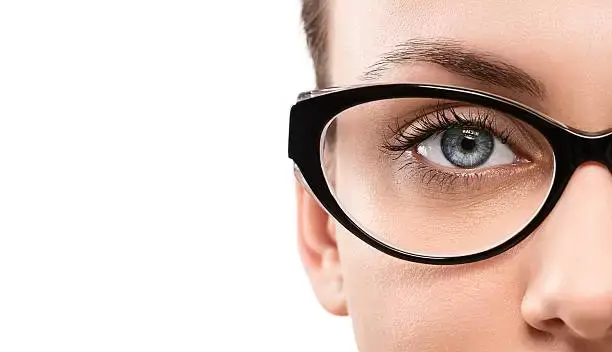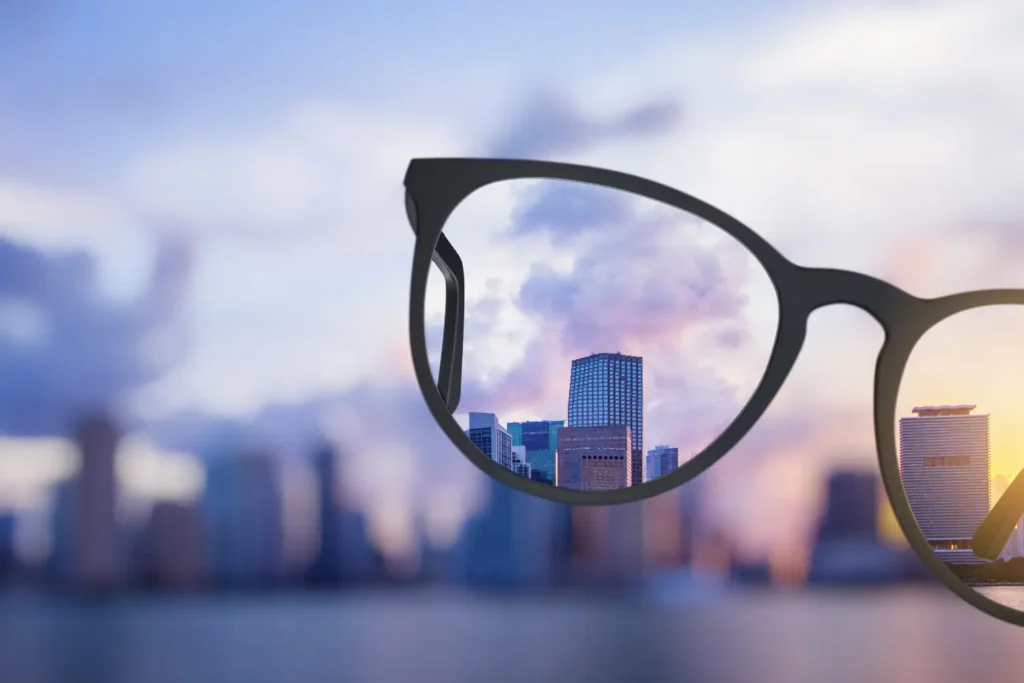Struggling with thick, heavy glasses? High index lenses might be the game-changer you’re looking for. In this blog, we’ll dive into what high-index lenses are, and explore their benefits and drawbacks to help you decide if they’re right for you. Let’s get started!
Contents
What Are High Index Lenses?

High index lenses are a modern solution for eyeglasses that offer significant improvements over standard lenses. Made from advanced optical materials, these lenses are designed to refract light more efficiently. This means they can be made thinner and lighter while correcting the same level of vision impairment as thicker, conventional lenses.
The key feature of high index lenses is their “index of refraction,” which is higher than that of standard plastic or glass lenses. The higher the index, the better the lens is at bending light, which allows for a thinner lens to correct a given prescription. This is particularly beneficial for people with stronger prescriptions, as traditional lenses for these prescriptions can be bulky and heavy.
Types of High Index Lenses
- 1.60 Index Lenses: These are the entry-level high index lenses and are suitable for those who have moderately strong prescriptions. They provide a thinner and lighter alternative to standard plastic lenses without being overly expensive.
- 1.67 Index Lenses: Offering a better balance between thickness and cost, 1.67 index lenses are thinner than 1.60 lenses and are well-suited for those with strong prescriptions who seek a more discreet look.
- 1.74 Index Lenses: These are the thinnest high index lenses available and are ideal for very high prescriptions. They significantly reduce the edge thickness of lenses, which enhances the appearance and comfort for those with notably high refractive errors.
Who Should Consider High Index Lenses?
High index lenses are an excellent choice for certain types of eyeglass wearers, particularly those who face specific challenges with their vision correction needs. Here’s who might consider switching to high index lenses:
- Individuals with high prescriptions
- People seeking aesthetic appeal
- For people who prefer large or trendy frame styles
- Suitable for active individuals who need strong prescription lenses but do not necessarily require the protective qualities of polycarbonate.
- Those looking for enhanced comfort
Benefits of High Index Lenses

High index lenses offer a range of advantages that make them a preferred choice for individuals with strong prescriptions and those looking for comfort and style in their eyewear. Here are some key benefits:
- Thinner and Lighter: Thanks to the higher refractive index, these lenses are significantly thinner and lighter than traditional glass or plastic lenses, even with high prescriptions.
- Improved Aesthetic Appeal: High-index lenses minimize the distortion that high prescriptions can cause to the wearer’s eyes (often referred to as the “bug-eye” effect). This leads to a more flattering, natural appearance and sleeker profile.
- Enhanced Comfort: The lighter weight of high-index lenses puts less pressure on the nose and ears, which is particularly beneficial for those who wear their glasses all day. This can reduce discomfort and the likelihood of headaches caused by heavy eyewear.
- Better Optical Performance: High-index lenses can provide clearer vision with less lens material, reducing aberrations such as blurriness and glare, particularly at the edge of the lens.
- UV Protection: Many high-index lenses come with built-in UV protection, helping to shield the eyes from harmful ultraviolet rays without the need for additional coatings.
- Versatile Frame Compatibility: The reduced thickness of high-index lenses increases the range of frame styles available for those with strong prescriptions.
Disadvantages of High Index Lenses
While high index lenses offer many benefits, there are a few potential drawbacks to consider before making the switch. Cost is a significant factor; high index lenses typically come with a higher price tag than standard lenses. This increase in cost is due to the advanced materials and technology required to produce them. Individuals looking for budget-friendly eyewear solutions might find the cost of high-index lens a bit prohibitive.
Another downside is their increased susceptibility to glare. High index lens can produce more reflections than traditional lenses due to their denser material. This issue can result in discomfort from glare, especially under bright lights or while driving at night. However, this can often be mitigated by opting for anti-reflective coatings, which help to reduce glare and enhance the visual clarity of the lenses. Additionally, high index lenses require precise frame fitting. Due to their thinness, ensuring a perfect fit in the chosen frames is crucial to avoid discomfort and ensure optimal vision correction, necessitating careful selection and adjustment by a skilled optician.
Comparison with Other Lens Types
| Feature | High Index Lenses | Polycarbonate Lenses | Standard Plastic Lenses |
|---|---|---|---|
| Thickness & Weight | Thinnest and lightest, ideal for strong prescriptions. | Thicker and heavier than high index but lighter than standard plastic. | Thickest and heaviest, suitable for mild prescriptions. |
| Durability | Less impact-resistant than polycarbonate. | Most impact-resistant, ideal for safety glasses and sports. | Less durable than polycarbonate. |
| UV Protection | Requires additional coating for UV protection. | Naturally provides 100% UV protection without additional coatings. | Generally requires additional UV protective coating. |
| Optical Clarity | Superior optical clarity, especially in higher prescriptions. | Good clarity, but may have more chromatic aberration than high index. | Good clarity, suitable for mild to moderate prescriptions. |
| Cost | Most expensive due to advanced material and technology. | Mid-range cost, more expensive than standard plastic but cheaper than high index. | Most affordable, good for budget-conscious users. |
| Ideal Usage | Recommended for individuals with strong prescriptions looking for aesthetics and comfort. | Best for children, active lifestyles, and those needing impact resistance. | Suitable for individuals with mild prescriptions seeking a cost-effective solution. |
Conclusion
If you’re considering high index lenses to enhance your vision and comfort while keeping style in mind, EyeMantra is here to guide you through the process.
At EyeMantra Foundation, we offer free consultations to help you explore your options and determine if high-index lens are right for you. Please don’t settle for less when it comes to your vision and comfort. Book your free appointment today at +91 9711116605 and let us help you achieve the best possible vision with the utmost style and comfort.
